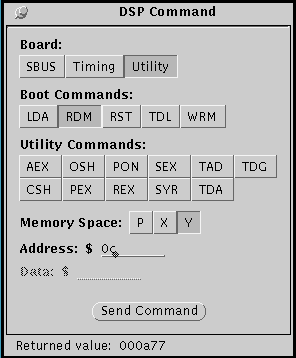Evacuating and Cooling the CCD dewar
If you find yourself arriving to a situation that is unknown it is quite possible that you will have to pump the dewar and possibly even do this in conjunction with warming up the outside casing of the dewar.
YOU CANNOT CONTINUE without knowing the CCD temperature.
WARNING: You should not be attempting any of these procedures without having been personally instructed by someone who knows. This is especially true of evacuation. In addition, it is standard procedure to wear safety goggles and gloves when working with the liquid nitrogen (LN2).
How to determine whether the dewar needs cooling?
The CCD dewar can not be cooled unless it has first been properly evacuated. It may well be the case the CCD has already been pumped down and cooled.You will want to determine the CCD temperature before you can decide on the need to evacuate.
Knowing the temperature, please click on one of the following scenarios;



How to determine whether the dewar needs to be evacuated?
Pumping is only required if the CCD temperature is at or near ambient temperature. This applies to when ambient is above as well as below zero degrees C.
A dewar which is near ambient is considered WARM .
Please carefully read the evacuation procedures before pumping down.
Dewar is at target temperature (-100 C)
If the dewar temperature reads -100 C or colder you may only find that you want to top-up with LN2 before you begin.
Don't forget that if you have just turned on the controller and that
the CCD temperature is below -100 C, it will take possibly 20 minutes
to attain equilibrium at the target temperature.
Dewar temp. < -10C, but is not at target (-100C)
If the dewar temperature reads -10 C or colder, but is not down at the target temperature of -100C it is safe to simply do a fill up with LN2.
Filling with Liquid Nitrogen (LN2)
Follow these steps to top-up the dewar with LN2:
Check the configuration
Follow these steps to check the existing dewar vacuum:
Dewar is at or near ambient temperature
It will be necessary to pump down the dewar. You may need to heat up
outside of the yellow CCD dewar!!
Three steps to 'pumping down' (evacuating) the dewar:
1. Setup of Vacuum Pump
Attach the vacuum hose flange to the dewar flange.
Check the vacuum grese between.
Connect with the clamp and tighten firmly.
2. Checking the existing vacuum
This section describes how to evacuate the vacuum hose and to use this
to check on the existing vacuum in the dewar. We do this because there
is not a vacuum head attached to the dewar itself. The closest gauge
head is located near the mechanical pump.
| DSP temp. readout (Hex) | Temperature ( C) |
|---|---|
| a3a | 20 |
| a75 | 0 |
| b08 | -50.0 |
| b8d | -95.2 (old target) |
| ba0 | -102 (new target) |
NOTE: It may take a couple of clicks on the Send Command button before you get back the 'correct' temperature. It takes a bit of experience to see how consistently (or rather inconsistently) the temperatures get reported.
When a warm dewar has been evacuated and freshly filled with LN2, it
will take approximately 4 hours before the setpoint temperature of
-102 C is reached.
Here is a typical cooling curve. Note the discontinuity at the point where an extra top-up of LN2 was applied.
A full well cooled dewar, with CCD controller 'ON' should stay at
setpoint of -102 C for approximately 18 hours during the summer months.
In fall and winter the lifetime can reach 24 hours.
With the temperature controller OFF the dewar may stay cold for as
long as 24 hours.
When the dewar has been warm the first LN2 fill may only last about 8
hours, so be careful to top it up for a second time before observing.
The linearity of the CCD device was tested as follows. Flat field
lamps of increasing intensity were taken, up to the point near which
the ADC saturates (65536 counts). At a present gain of 2 electrons /
ADCU, this is approximately 130000 electrons. The highest intensity
exposure reached approximaely 52000 ADCU, or 104000 electrons, the CCD
showing very good linearity through the entire range of exposures.
Here is a graphical depiction of
the results.
